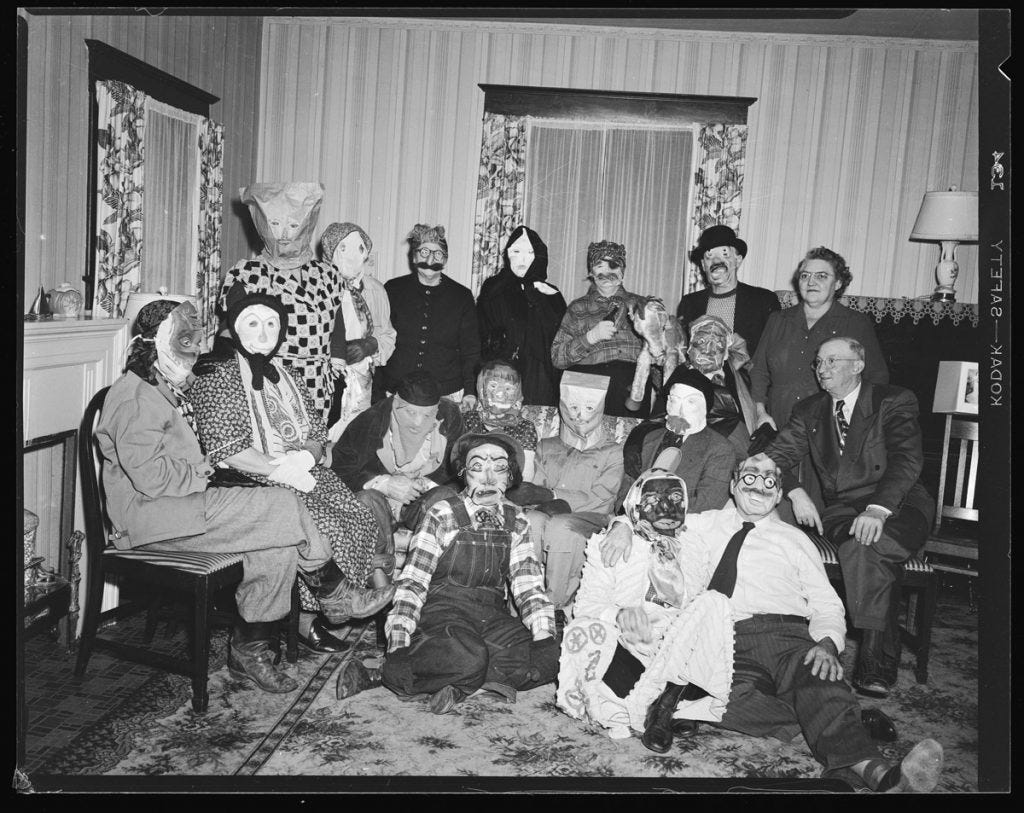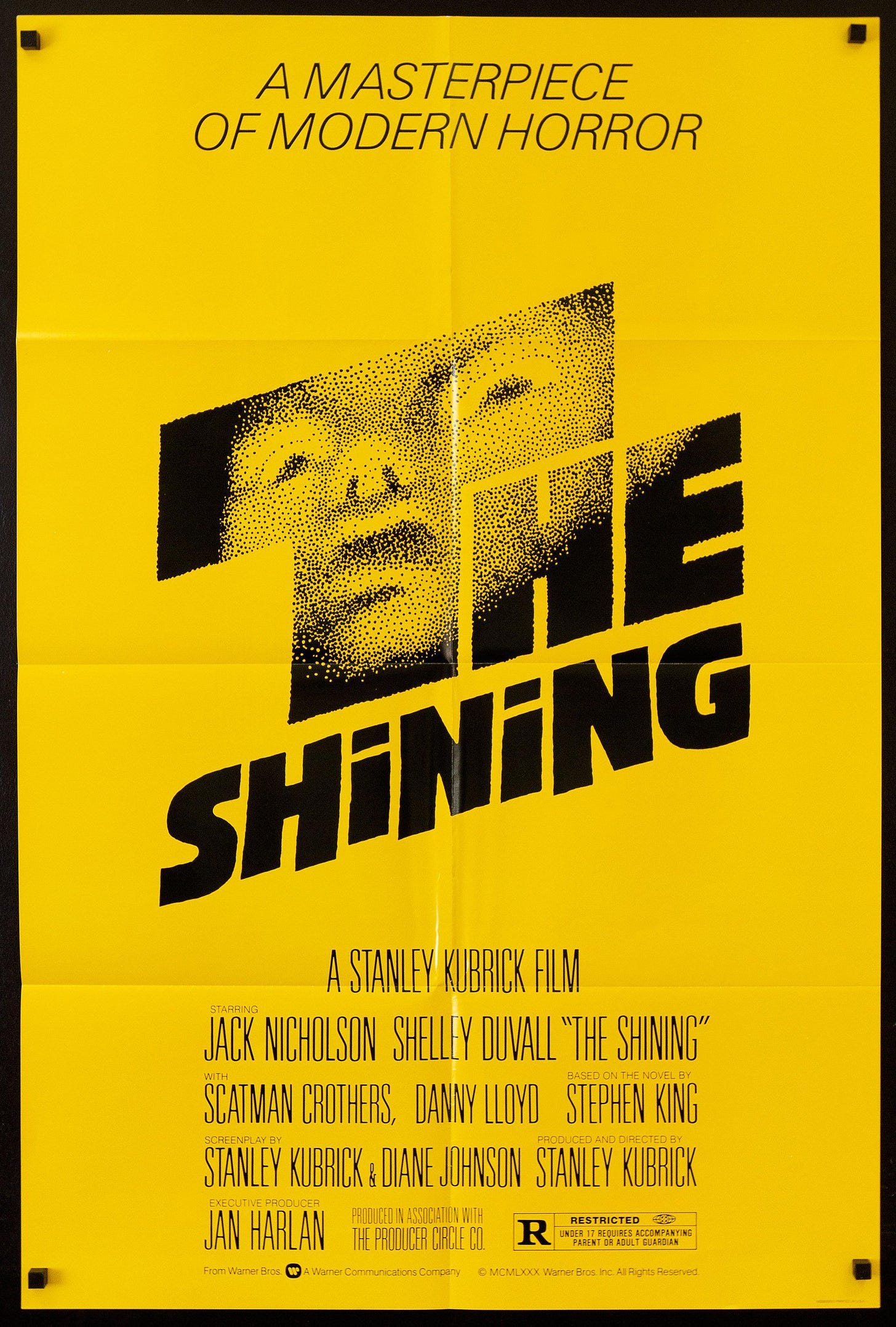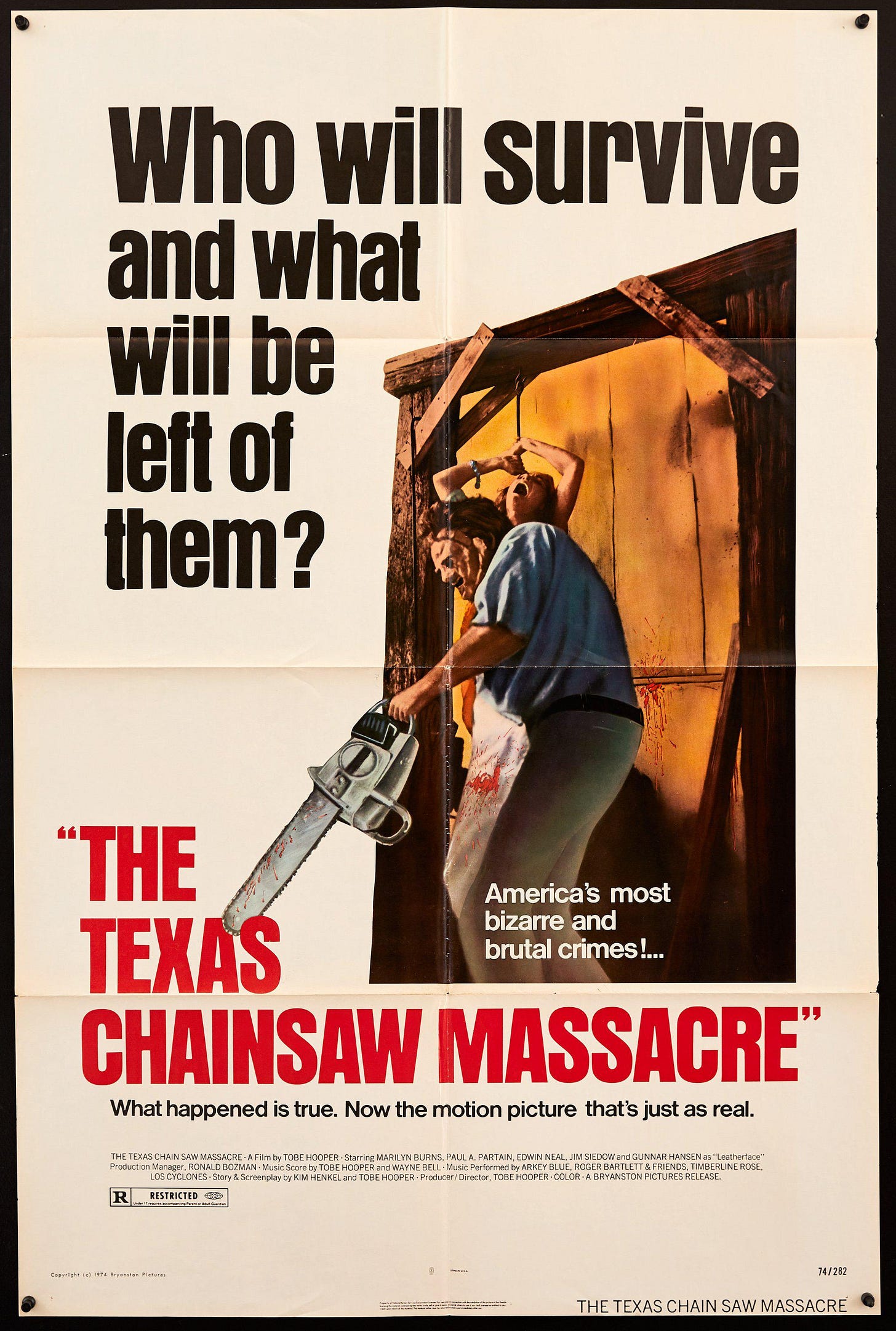Yes, it’s that time of year again, when horror fans are driven into fits of apoplectic rage by yet another mainstream media outlet’s Best Horror Films list. We’ve all read them. An editor who doesn’t like and/or understand the genre assigns a freelancer who also doesn’t like and/or understand the genre to pen a Top Ten or Twenty Best Horror Films of All Time list to coincide with Halloween, the one day of the year said editor and writer are forced to think about horror films.
You can spot these lists by their aloof tone and by the inclusion, usually in the top five, of some combination of Don’t Look Now, Psycho, and Silence of the Lambs, only the first of which is a horror film1 (and not a particularly scary one). It’s as if the only films the writer will consider have gotten or will get the Criterion Collection DVD treatment.2 The list also usually includes at least one film from the pre-Psycho era, a silent film or two and/or one of Universal’s classic Creature Features. That’s all fine and dandy, but Nosferatu and The Bride of Frankenstein have not scared anyone over the age of ten since knee-length bathing suits were considered scandalous. The best films of those earlier eras stand as works of art, and they maintain their power to captivate and unnerve, but postwar culture—film, lit, rock and roll, the nightly news—has numbed our collective sensibilities to a degree unimaginable to earlier generations. We TV babies are not easily shocked, and our palette has expanded to include depictions of violent cultural desecration that require appeasing.
So what does constitute a great horror film, according to The Veil’s august standards? The answering of that question—What makes a great work of horror?—was the primary reason for launching The Veil (as discussed here). For this inaugural Top Ten list, let’s say that a great horror movie is not only scary, its purpose is to scare you. And like the best works of horror and the weird, these films reveal, at least while the lights are out, that the world is a far more mysterious, dangerous and enchanting place than the dreary materialists and “experts” of our day would have us believe. These films offer a giddy, toe-curling escape into the pre-Modern and the seemingly irrational. And us horror fans—we’re okay with that.
10 Noroi: The Curse: This found-footage film from 2005 languished in post-release purgatory for so long that it almost didn’t make it across the pond. Part of me wishes it hadn’t. This is a disturbing film. Why? Honestly, I don’t want to think about it. There’s a guy covered in tinfoil who lives in a room lined with newspapers. Eerie silhouettes and far worse images sprout in the film’s margins like fungi. And then there’s the foetuses—I’ve said enough.
9 The VVitch: The closest anyone will ever get to capturing on film the claustrophobic, guilt-twisted ethos of the High Gothic American period, a literary flourishing that produced the works of Melville, Poe and Hawthorne (and influenced everyone from Henry James to Eudora Welty to H.P. Lovecraft to Shirley Jackson and Stephen King). The VVitch contains the greatest film goat of all time (ouch!) and has the seamless and arresting beauty of all great folk art.
8 The Descent: Neil Marshall’s follow-up to his under-appreciated Dog Soldiers (still The Veil’s favourite werewolf movie) switches out that film’s isolated (almost) all-male cast for an even more dangerously isolated and (almost) all-female cast. Seven old friends enter a remote cave system for a day of spelunking. The caves are not as empty as they seem. The first half of the movie, in which nothing too terrible happens and the monsters remain off-screen, softens up the audience for the batshit-crazy second half, which contains several scenes of primordial violence worthy of their own paintings in France’s Lascaux Caves.
7 Halloween: John Carpenter’s slasher ur text is a perfect little film, custom built to purpose: to remind the audience that the boogeyman will not be consigned to children’s stories and that he won’t be stopped by psychiatrists, cops, hot captains of the football team or any other adult authority figures. Everything in Halloween just works—the theme music, the pioneering point-of-view tracking shots, Michael Myers’ cheap William Shatner mask, the brilliant casting of Jamie Lee Curtis as the Final Girl. There’s not an inch of fat on the bone and the movie hums under the hood like a custom sports car from the first frame onwards.
6 The Conjuring: Someday soon The Veil will publish an essay on why James Wan is the best horror director of the 21st century. Until that time, watch The Conjuring. Or the sequel. Or the first two Insidious films. It doesn’t matter which: they’re all the same funhouse ride with a different cast of carnies in cheap masks leaping out of the dark as you pass them. But try as you might to laugh them away, those monsters will scare you, because these are the films of the great James Wan.
5 Night of the Living Dead: There’s not much left to be said about George Romero’s black and white zombie classic, a film that launched a thousand gut-munching imitators and even more film-degree theses. Dawn of the Dead, Romero’s 1978 sequel, is probably a more accomplished (and certainly more influential) film, but Night’s flat grey palette, documentary-style aesthetic and still shocking ending have yet to be topped.
4 Kill List: Fans of this cult masterpiece are want to share theories on what is actually happening on screen for most of Kill List’s fairly short running time. Are the two assassins who are hired to kill several seemingly unrelated victims pawns in a sinister plot? Yes, that much is obvious. Is that plot part of a larger occult conspiracy? For sure it is, but what is that conspiracy and why were those two men—especially Jay, a PTSD-afflicted ex-veteran—chosen to pull it off? Kill List is an accomplished enough film to mine anxiety from ambiguity while also delivering a coherent and unnerving horror experience.
3 The Shining: Stanley Kubrick’s single contribution to the genre is a horror opera without the consolation of beautiful arias and choruses. Like all of Kubrick’s late films, it must be watched at least three times to gain fluency in its language of symbols, dream-like time shifts, and Kabuki-style performances (Shelley Duvall gets our vote for Best Actor Ever in a Horror Film). You can watch The Shining twenty times and still discover new things with each viewing. (The Veil editorial team speaks from experience.)
2 The Exorcist: The Godfather of horror films. William Friedkin used every trick in the 1970s Maverick Film Auteur’s playbook—high- and lowbrow—to create a film so shocking that people fainted in the aisles at early screenings. It’s also that rare film that takes the agonies of religious faith seriously and features a realistic depiction of a Catholic priest, one who does more than misquote the Gospels and genuflect when confronted with evil. A decidedly adult horror film that isn’t afraid to spew green vomit into the viewer’s face.
1 The Texas Chainsaw Massacre: Perhaps no other film—horror or otherwise—so artfully occupies the liminal zone between death and beauty as Tobe Hooper’s low-budget shocker. From the opening montage, in which distant solar flares are juxtaposed with a macabre creche of reconstructed corpses, the viewer is transported to a more elementary zone of human culture, where blood tokens—finger bones, the skulls of your ancestors and the flayed hides of your enemies—are considered must-have home decor items. Betrayed by the promises of late-stage capitalism, Leatherface’s family survive by doing what they do best: trussing, braining and eating the fatted calves of modernity, in this case, five middle-class Texas hippies who picked the wrong neighbourhood for a trip down Memory Lane.
(Runners up, in no particular order: The Wicker Man, Black Christmas, A Tale of Two Sisters, Dawn of the Dead, Alien, The Evil Dead, Let the Right One in, Paranormal Activity, Nightmare on Elm Street, The Brood, and The Changeling.)
I know, I know: these things are subjective, but Silence and Psycho, although they contain elements of horror, especially the Gothic, are dominated by tropes from the police procedural and suspense genres. More to the point, they reassure the audience that in the end, the boogeyman can be explained and contained (even if, like Hannibal Lector, one of cinema’s great monsters, he or she ultimately outwits the forces of order and justice).
This Top-25 Scary Films list from The Atlantic may actually be a brilliant parody of a film snob assessing the horror genre.











This is a very good list. I'm always happy to see Ben Wheatley on one. I'd switch out The Conjuring for The Wicker Man. The top five are practically perfect choices.
I've got a lot of time for this list...very well done. I'd shoehorn in Lake Mungo, though. The best found-footage cum ghost story ever.